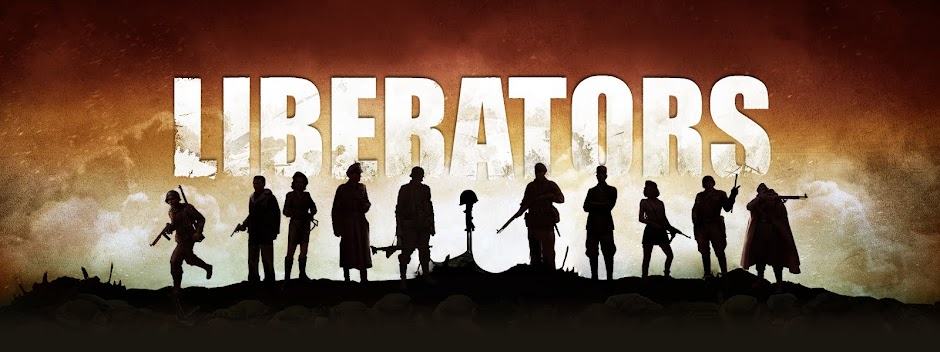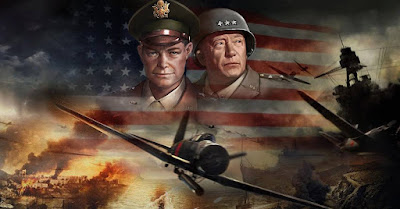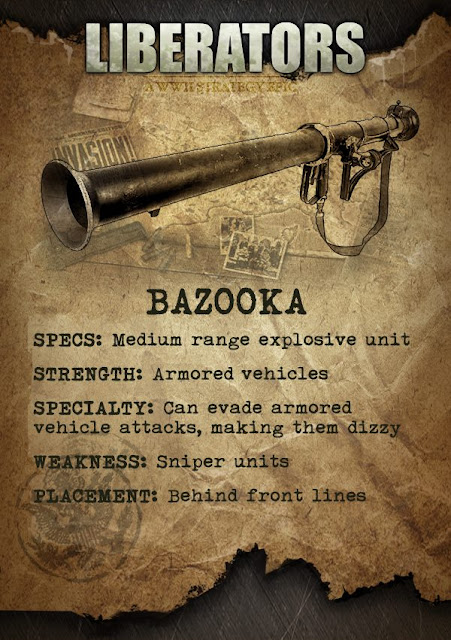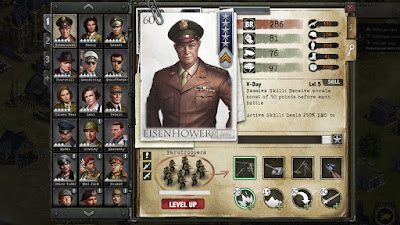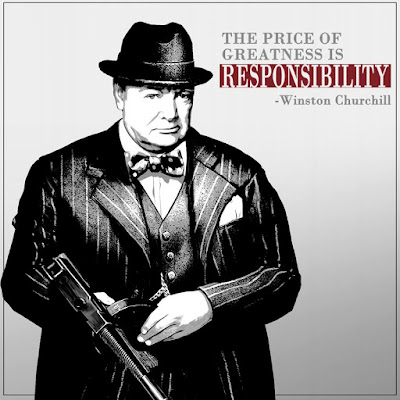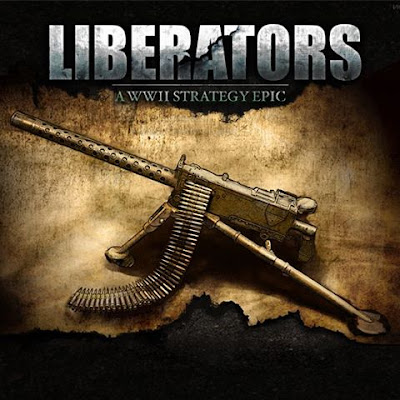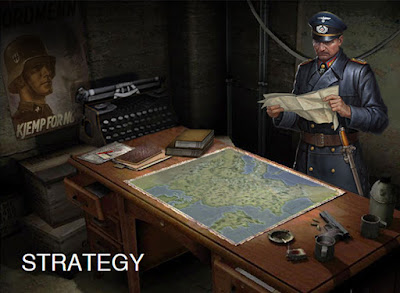Game scenes in full 3D three-dimensional representation, it's restored fly screen, allowing the player to experience a realistic visual effects. Common simulation small screen, showing the details of the game, making the game more interesting. Chinese Communist Party set up 21 game levels and other players to challenge, for players to fly as many as 20 kinds of selection, allowing the player to experience a high degree of freedom.
Liberators online
Liberators to World War II, the Pacific stage background for the game, the players to show the Pacific, tragic war scenes, through real experience of war to control the aircraft.
Oberon Games launched a classic flight shooting game "Heroes of the Pacific," the sequel Liberators. The player into the game again shocking the Pacific theater of World War II. In the game you will control the aircraft in flight between the infinite sky, and ferocious fighting the Axis powers into the real hero fly!
Liberators play
2 Off: This is none of your manipulation machine gun, is relatively simple.
Victory conditions: the elimination of all enemy aircraft.
Failure conditions: gunboat destroyed (almost impossible)
The clearance is the use of heavy machine gun ships, two aircraft and has a total of 12. The beginning of the first 2 revolutions open a few feeling less rush rotational speed and suddenly bullets fly line, the upper right corner is the machine gun blood. Well, first a blood enemy now presents! Attack! The machine gun but did not take the initiative aimed to .. honestly one a sight of it, trust must have patience not good brothers and turn that is not beat the enemy, and my heart Jia ~ ~ haha stomp your feet breath sustained it. Remember to aim the front of the plane a little on the line, the elimination of all 12 enemy clearance.
Experience: grasp the machine gun bullets fly arc can easily eliminate all enemy clearance.
Numeric keys 123 are controlled missiles, torpedoes, bombs. Right-click launch. If the picture is solid, it can be used to clarify, clarify hollow been used up. And 14 in addition to several other off and blow up the other boat off tasks, which are of no use. The aircraft fly too fast, missile fundamental beat.
Ever since I started play Liberators, I watched a lot of World War II movies. Most of them are Hollywood production, some of them European. Below are my 10 favorites World War II movies:
Schindler's List
Steven Spielberg, 1993
It is impossible not to have this second Spielberg film from the list near the top. Suddenly a great success and a desperately upsetting image, his adaptation of Thomas Keneally novel Schindler's Ark past is to see one of the key films about the Second World War that it cuts so directly in the heart of the poisonous ideology of the Nazis. It is questionable whether it the epilogue of real survivors put memorial stones on their Savior grave need, but only because the 3 hour-plus que es are preceded by so astonishing potency in their representation of the Nazi atrocities and the suffering they caused. Morally and historically, the film as essential viewing of both the tremendous movement feels "Never again", and a reminder of the good que attempted lonely act of defiance with it.
Saving Private Ryan
Steven Spielberg, 1998
Private Ryan, it's often called, is not perfect: it plays its strongest card first, the middle section is uneven, and there is not welcome outages in sentimentality. But, 11 years on, grabs the climatic booth in town Ramelle yet the stamp of the dreaded it is underestimated. And the filmmaker has always plunged the audience into the nowhere to hide horrors of the battle of Spielberg has in the first 25 minutes of the film. It is partly the meticulous sonic and visual composition of its representation of the D-Day landings on Omaha Beach, partly the grim desaturated footage. But particularly intelligent is to show us the same cruel episode twice Spielberg's refusal, that is, we never develop any psychological resistance the luxury. Every few seconds, a fresh corner of hell awaits you - and yet you can not tear your eyes. It's an amazing, truly frightening spectacle, and a great tribute to the men who really did it.
Casablanca
Michael Curtiz 1942
Chef battlefield Casablanca is one of the heart instead of guns, but it is also expressly a war movie made, and set out to play during the 1939-45 conflict, narrative driven by this, and in the Vichy-controlled area. been what else to say about the film que hasnt already been said? Bogey! Bergman! The Bar! The song! And above all, que writer, so wonderfully funny, but Beat together on storm-tossed sea of emotions. The scene in which The Wacht am Rhein is drowned out by the Marseillaise makes you still want to beat the air and consume the croissant.
The Bridge on the River Kwai
David Lean, 1957
The elaborate production que David in the big league starts lean is great, mature and full of TWO eye-catching props and moral complexity. Alec Guinness is the POW who build their Japanese conquerors helps a bridge for the Burma-Siam railway. Neither do que British commandos the fruits of their labor up plan to blow in the sky, making an epic, the entire project gives, Sisyphean futility. Endless rewatchable.
Patton
Franklin J. Schaffner, 1970
1943 North Africa, take on George Patton command of the American forces. Committed to fighting Germany to Rommel, Patton "The Desert Fox" drives the back by their own tactics using the German. Promoted to Lieutenant General, Patton is sent to Sicily, where he engaged in a personal war of egos with British Field Marshal Montgomery. Performing brilliantly in Italy threatened Patton seriously his future with a single blow. While touring an army hospital, the General is suffering a GI of nervous fatigue. Outraged by what he described as a slacker, Patton smelling the poor soldier and tells him in a hurry to get well. This incident leads to his loss of his command and by extension, missed D-Day. In his last campaign, Patton leads the US 3rd Army across Europe. Unabashedly flamboyant, Patton remains a valuable resource, but ultimately, taste too much of a "loose cannon" compared to the more prudent tactics of his old friend Omar Bradley.
The Longest Day
Ken Annakin, Andrew Marton and Bernhard Wicki 1962
In 1944, the US Army and the Allies are planning a huge invasion landings in Normandy, France. Despite the bad weather, are General Eisenhower, the order and the Allies land in Normandy. General Norm Cota (Robert Mitchum) travels with his men on Omaha Beach. With much effort and the lives lost, you get on the beach, travel deep into French territory. The German military due to arrogance, ignorance and a sleeping Adolf Hitler, delay their response to the Allied landings, with debilitating results.
Tora! Tora! Tora!
Richard Fleischer, Kinji Fukasaku, Toshio Masuda 1970
In 1941, the Japanese are to solve conflicts with the United States on a number of issues that they are trying to your Washington Embassy. In this case diplomacy fails, the military hatching plans for a surprise early Sunday morning raid on the US base at Pearl Harbour are. American Breaking News Japanese diplomatic messages but few high-ups are willing to believe, que an attack is likely, let alone where or how it might come.
The Counterfeiters
Stefan Ruzowitzky 2007
Writer / director Stefan Ruzowitzky explores the moral corrosion of Nazi complicity with this tightly wound adaptation of Adolf Burger fact-based book The Devil's Workshop. Salomon Sorowitsch, a talented artist at heart, but his desire for wealth driven him his creativity for more nefarious means to use. Arrested by the police inspector Herzog at the beginning of World War II, Sorowitsch is sent to the infamous Mauthausen concentration camp. It does not take long before Salomon thinly veiled opportunism earned him a relatively comfortable position of the camp resident draftsman, and five years later he is mysteriously swept away to Sachsenhausen. When arrived at the camp, discovered Sorowitsch que Duke, now a commander, tried to destabilize the economy of the Allies, while simultaneously creating the Nazi war machine financed by a special team of fake artists Mounting million in fraudulent pounds and US dollars. As the operation gets underway, Sorowitsch finds the efforts of the team constantly by relentlessly idealistic light pressure specialist Adolf Burger undermined. follow in the months que, the team struggles with her conscience Axis powers are gradually overwhelmed by Allied power.
Downfall
Oliver Hirschbiegel 2004
Downfall is a 2004 German war film shows the last ten days of Adolf Hitler's rule over Nazi Germany in 1945. It is based on the books Inside Hitler's Bunker: The Last Days of the Third Reich, by the historian Joachim Fest; Until the Final Hour: Hitler's last secretary, the memories of Traudl Junge, one of Hitler's secretaries; Inside the Third Reich, the memoirs of Albert Speer, one of the highest-ranking Nazi officals Both the war and the Nuremberg trials to survive; Last Days of Hitler: An eyewitness report by Gerhard Boldt; The emergency hospital under the Reich Chancellery: A doctor experienced Hitler's death in Berlin by Dr. Ernst-Günther Schenck; and soldier: Reflections of a German soldier, 1936-1949, Siegfried Knappe memoirs. The film, directed by Oliver Hirschbiegel and written and produced by Bernd Eichinger, was nominated for an Oscar for best foreign language film.
The Great Dictator
Charles Chaplin, 1940
Twenty years after the end of World War I, where the people were from Tomainia on the losing side, Adenoid Hynkel has risen to power of unscrupulous dictator of the country. He believes in a pure Aryan state, and the decimation of the Jews. This situation is not known to the Jewish Tomainian simple barber, since the result of the battle WWI was hospitalized. After his release, the hairdresser, who had suffered from amnesia about the war, the new life of the Jews is shown followed by many living in the ghetto, including the washing woman named Hannah, with whom he begins a relationship. The hairdresser is ultimately spared such persecution of Commander Schultz, which he stored in que WWI fighter. The life of the Jews in Tomainia eventually spared with the policy shift by Hynkel even doing so for ulterior motives. But those motifs include the lack for world domination, starting with the invasion of neighboring Osterlich, which may be threatened by Benzino Napaloni, the dictator.
Next time I will write about my favorite WW2 games, such as Battlefield 1942, Call of Duty, Liberators Facebook, and Call of War. Till then!
Liberators features real-life weapons and equipment in World War II. Due to its ease-of-use, simple maintenance and operation, as well as fewer restraints on mass production, the M1 “Bazooka” became an indispensable tool for the war effort. Eisenhower cited the Bazooka as one of the major contributors to the Allied victory. It was useful against tanks and to assail fortified positions.
Bazooka is the common name for a man-portable recoilless antitank rocket launcher weapon, widely fielded by the United States Army. Also referred to as the "Stovepipe", the innovative bazooka was among the first generation of rocket-propelled anti-tank weapons used in infantry combat. Featuring a solid rocket motor for propulsion, it allowed for high-explosive anti-tank (HEAT) warheads to be delivered against armored vehicles, machine gun nests, and fortified bunkers at ranges beyond that of a standard thrown grenade or mine. The bazooka also fired a HESH round, effective against buildings and tank armor. The universally applied nickname arose from the M1 variant's vague resemblance to the musical instrument called a "bazooka" invented and popularized by 1930s U.S. comedian Bob Burns.
During World War II, German armed forces captured several bazookas in early North African and Eastern Front encounters and soon reverse engineered their own version, increasing the warhead diameter to 8.8 cm (among other minor changes) and widely issuing it as the Raketenpanzerbüchse "Panzerschreck" ("Tank terror").
The term "bazooka" still sees informal use as a generic term referring to any ground-to-ground shoulder-fired missile weapon (mainly rocket propelled grenades).
Secretly introduced through the Russian front and in November 1942 during Operation Torch, initial production versions of the launcher rocket M1 and M6 were hastily supplied to some of the US invading forces during the landing in North Africa. On the night before landing, General Dwight D. Eisenhower was shocked to find out from a subordinate that none of its troops had received any instruction in the use of the bazooka.
Initially supplied with M6 rocket highly reliable and untrained, the M1 did not play a significant armed role in combat in the North African struggle, but did provide a stroke of German intelligence when some were captured by the Germans in first encounters with inexperienced US troops . A US general visits ahead of Tunisia in 1943 after the end of combat operations could not find soldiers who could report that the gun had actually stopped an enemy tank. Another issue bazooka was suspended in May 1943.
During the Allied invasion of Sicily, a small number of M1A1 Bazooka (using an improved rocket, the M6A1) were used in combat by US forces. The M1A1 was responsible for four average German tanks and heavy Tiger I, with the latter being knocked out by an unlikely hit across the gap to the driver. A major drawback to the bazooka was the big backblast and smoke trail (in colder weather), which gave the position of the shooter, forcing rapid relocation of the squad. Furthermore, the bazooka fire staff often have to expose their body, in order to obtain a clear field of fire against an armored target. Casualties among the members of the bazooka team were extremely high during the war, and assignment of such rights in the face of German counterfire was generally regarded by other members of the squad not only as highly dangerous, but almost suicide.
When the existence of the bazooka was revealed to the American public official press release for the first two years stated that "packed the punch of a 155 mm cannon" -a great exaggeration, but widely accepted by the American public at the time.
At the end of 1942, the number of production early American M1 bazookas were captured by German troops of the Russian forces which received amounts of bazooka under Lend-Lease as well as during Operation Torch invasions in the North African Campaign. The Germans quickly developed its own version of the gun, increasing the diameter of the warhead of 60 mm to 88 mm (2.4 to 3.5 inches). In German service, the bazooka was popularly known as the Panzerschreck. The German weapon, with its larger warhead, more powerful, had significantly higher armor penetration; ironically, calls for a warhead larger diameter had also been raised by some officers of artillery during rehearsals US M1, but were rejected. After participating in an armor penetration test involving a German Panther tank using either Raketenpanzerbüchse or RPzB 54 Panzerschreck and bazooka US M9, the Donald E. Lewis cable from the US Army informed his superiors that the Panzerschreck was "far superior to American bazooka ":" I was so favorably impressed [by Panzerschreck] I was ready to take after the Krauts with his own weapon.
The bazooka M1 fared much better on the rare occasions that could be used against the much thinner armor usually mounted on the underside, top and bottom of enemy tanks. To hit the bottom panel of an enemy tank, bazooka operator had to wait until the tank was overcome a steep hill or other obstruction, to hit the top armor usually required fire the rocket from the top floor of a building or position high like. During 1944 Allied offensive in France, where some examples of connecting plane with the US Army began to be experimentally in armed camp, and were flying in pairs or quartets of American military equipment - and most notably used during the Battle of Arracourt - Major Charles "Bazooka Charlie" Carpenter assembled a battery of three bazookas M9 on the-fuselage wing brackets on either side of his L-4 Grasshopper aircraft in order to attack the enemy's armor, and was credited with six destruction tanks enemies, including two Tiger I heavy tanks.
Despite the introduction of bazooka M9 with its most powerful rocket, the M6A3-in late 1943, gun effectiveness of reports against enemy armor decreased alarmingly in the last stages of World War II, as new German tanks with thicker and better designed armor plate cast and armor skirts / armor spaced were introduced. This development has forced the operators to target bazooka less well protected areas of the vehicle, such as rails, sprockets, bogey wheels or rear engine compartment. In a letter dated May 20, 1944, General George S. Patton told a colleague that "the purpose of the bazooka is not to hunt tanks offensively, but to be used as a last resort to keep the tanks from invading infantry. to ensure this, the interval should be carried out at about 30 yards. " The extreme difficulty of closing the grenade-throwing unnoticed distances before hitting targets small spot on an enemy tank helps explain the high male death rate attributed to the duty to launch anti-tank rockets.
Campaign in the Pacific, and in North Africa, the original bazookas sent to combat reliability problems often had. The trigger circuit operates on battery was easily damaged during rough handling, and rocket engines often failed due to high temperatures and exposure to moisture, salt spray or humidity. With the introduction of the M1A1 and its most reliable rocket ammunition, the bazooka was effective against some fixed Japanese infantry positions such as bunkers of small arms and pill boxes concrete. Against emplacements coconut and sand, the weapon was not always effective, since these softer structures often reduced the force of impact of the warhead enough to prevent the detonation of the explosive charge. Later in the Pacific war, most infantry and marine units often used the flamethrower M2 to attack such placements. In the few cases in the Pacific, where the bazooka was used against tanks and armored vehicles, rocket warhead easily penetrated the thin armor plate used by the Japanese and destroyed the vehicle. Overall, the M1A1, M9 and M9A1 rocket launchers were seen as useful and effective weapons during World War II, although they were mainly used against enemy fortifications and fixed positions, not as anti-tank weapons. General Dwight Eisenhower later described it as one of four "tools of Victory", which won World War II for the Allies (in conjunction with the atomic bomb, Jeep and transport aircraft C-47 Skytrain).
Make use of it today on the battlefield now! Visit Liberators Facebook Page for more information!
Tactics are an important part of any PvP game. It is the same with Liberators. Regardless of what you may have compared to your opponent, unless against the impossible (lvl 1 Rifle man vs lvl 10 mega tank), it's all down to how you play against that player or AI.
Liberators Tactics
Attack machine guns (tank units / high range): When attacking machine guns, most units with a range of 345 and above will be enough to destroy it. If an Anti-floor unit is nearby and aggressive, you do not need to stop the attack or use the technique of "Bait and Bash" below.
Mortar attack (Air controllable if there are guns on the battlefield and / or Hellfires / mega tanks): All Air can defeat mortars, but the problem is when you have a Gatling Gun Flak or nearby. In my case, I usually use my two fast reliable Raptors to destroy both types of pesky tanks. However, if you have none, you will need to use Hellfires or Mega Tanks and load.
Attacking Mortar and Machine Gun Turret (All): This will be more complicated. If you have a high level of Cobra or at least level 6 Elite / Warhawk, you can take the mortar if it's in front of the gun tower and easily use the land to end the gun turret. However, in the case of having a Gun Turret machine in front of a mortar, you have to use a Hellfire or charge on.
Sweeping Mine: This is by far the most common tatctics and used in the game. Most often, this task is acomplished by attack dogs, because with the enabled AI they find landmines. However, because it is a premium event some lower level players can not have it. As such, the alternative is the use of a group of men Riffle (Repairs are also much shorter). The object is to make a lonely man Riffle, and move it in a big way to the enemy base. If he enters a mine vary, it will be killed and the mine will be used. As such some players keep their mines within gun range to avoid sweeping.
Liberators Tips
- Employ steamroll Tactics to crush his opponents - invaded a squad with enormous firepower of a battalion of heavy tanks - Paladins absorb damage while Challengers punish the enemy forces.
- Guerilla Tactics tried yet? Use this method reaches the supply lines and the collection of enemy positions. It is a quick and low-cost strategy, but the units to deploy here - suicide bombers, buggies Rocket - is disposable. Do not become attached to.
- Hide your units to catch the enemy off guard. Hercules, flamethrowers and suicidal make excellent hidden drives. Put them behind the Command Center and other tall buildings to capitalize on the element of surprise.
- Do a thorough job of scouting before attacking. If the mouse changes from a pointer to a hand when hovering over a tree or abandoned building, then you stumbled upon an enemy unit in hiding, ready to attack.
- Destroy their enemies mills to cut their towers up to 50% of its production of usual damage. Its features will be yours for the taking.
- Try scouting your enemy well in advance using a squad made up of a single unit. Quick units such as the rocket Buggy will let you cover ground more quickly. Have a tactical vision with almost no risk at all.
- If some of your tanks are hit, try to pull the health of low vehicle to the back of the pack, allowing them to continue causing damage in the face of destruction.
- Use the long-range rocket barrage Turret Snipers or in bunkers to catch enemy mortar Baiters.
- Remember, Commander - the Flak tank and Flak Turret is extra effective against the powerful Kondor!
- If you attack from the right angle, the plane can take out tanks and mortars without being hit by Turret fire, allowing its ground units to punish the rest of the base of the defender. Look for these screenshot.
Try the Liberators tactics and tips in the game by visiting Liberators Facebook Fanpage now!
Liberators features historical World War 2 commanders. "No crime is so great as daring to excel." Few people have done more for British morale during World War II than in Prime Minister wartime Sir Winston Churchill. A natural leader, he was able to forge alliances, make preparations, and save countless lives. By combining its making first-class decision rhetorical exemplary skills, he brought Britain to the brink of defeat all the way to victory.
Sir Winston Leonard Spencer-Churchill, KG, OM, CH, TD, PC, DL, FRS, RA (November 30, 1874 - January 24, 1965) was a British statesman who was the UK prime minister from 1940 to 1945 and again from 1951 to 1955. Churchill was also an officer in the British army, a historian, a writer (as Winston S. Churchill), and an artist. He won the Nobel Prize for Literature, and was the first person to be made an honorary citizen of the United States.
Churchill was born into the family of the Dukes of Marlborough, a branch of the Spencer family. His father, Lord Randolph Churchill, was a charismatic politician who served as finance minister; his mother, Jennie Jerome, was an American socialite. As a young army officer, he saw action in British India, the Sudan and the Second Boer War. He gained fame as a war correspondent and wrote books about his campaigns.
At the forefront of politics for fifty years, he held several political offices and cabinet. Before the First World War, he served as Chairman of the Board of Trade, Home Secretary and First Lord of the Admiralty as part of the liberal Asquith government. During the war he continued as First Lord of the Admiralty until the disastrous Gallipoli Campaign caused his departure from the government. He then briefly resumed active service on the Western Front as commander of the 6th Battalion of The Royal Scots Fusiliers. He returned to government under Lloyd George as Minister of Munitions, Secretary of State for War, Air Secretary of State, then Secretary of State for the Colonies. After two years out of Parliament, he served as finance minister in the conservative government of Baldwin 1924-1929, controversially returning the pound sterling in 1925 to the gold standard at its pre-war parity, one widely seen as a move creating a deflationary pressure on the UK economy.
Out of the office and politically "in the wilderness" during the 1930s because of his opposition to increased home rule for India and its resistance to 1936 abdication of Edward VIII, Churchill took the lead in warning about Nazi Germany and campaign for rearmament. With the outbreak of World War II, he was again appointed First Lord of the Admiralty. Neville Chamberlain's resignation in the following May 10, 1940, Churchill became Prime Minister. His speeches and radio broadcasts helped inspire British resistance, especially during the difficult days of 1940-1, when the British Commonwealth and Empire were almost alone in its active opposition to Adolf Hitler. He led Britain as Prime Minister until the victory over Nazi Germany had been secured.
After the Conservative Party lost the 1945 election, he became Leader of the Opposition to the Government Office. He publicly warned of an "Iron Curtain" of Soviet influence in Europe and promoted European unity. After winning the election in 1951, Churchill again became prime minister. His second term was concerned about foreign affairs, including the Malayan Emergency, Mau Mau Uprising, the Korean War, and a UK-backed coup in Iran. Internally their government placed great emphasis on building houses. Churchill suffered a serious stroke in 1953 and retired as prime minister in 1955, although he remained a member of parliament until 1964. After his death at ninety, in 1965, Elizabeth II awarded him the honor of a state funeral which saw one of the largest assemblies of world statesmen in history. Named the most British of all time in a 2002 Churchill's research it is widely regarded as being among the most influential people in British history, consistently ranking well in opinion polls UK prime ministers.
Churchill was an accomplished artist and took great pleasure in painting, especially after his resignation as First Lord of the Admiralty in 1915. He found a haven in art to overcome periods of depression he suffered throughout his life. As William Rees-Mogg said: "In his own life, he had to suffer the" black dog "of depression in his landscapes and still lives there is no sign of depression.." Churchill was persuaded and taught to paint by his artist friend, Paul Maze, whom he met during the First World War. Maze was a great influence on the painting of Churchill and became a fellow of painting throughout life.
Churchill is best known for his impressionist scenes of landscape, many of which were painted while on holiday in southern France, Egypt or Morocco. Using the pseudonym "Charles Morin," he continued his hobby throughout his life and painted hundreds of pictures, many of which are on display in the studio at Chartwell as well as private collections. Most of his paintings are oil-based and feature landscapes, but he also made a series of interior scenes and portraits. In 1925, Lord Duveen, Kenneth Clark and Oswald Birley chose their winter sun as the winner of the prize in a contest for anonymous amateur artists. Due to obvious time constraints, Churchill attempted only one painting during World War II. He completed the Villa Taylor tower painting in Marrakech.
Some of his paintings can now be seen in the Wendy and Emery Reves Collection at the Dallas Museum of Art. Emery Reves was American publisher Churchill, as well as a great friend and Churchill often visited Emery and his wife in their villa, La Pausa, in southern France, which had originally been built in 1927 to Gabrielle "Coco" Chanel for her Bendor lover, 2nd Duke of Westminster. The villa was rebuilt inside the museum in 1985, with a Churchill painting gallery and souvenirs.
Despite his lifelong fame and upper-class origins Churchill always struggled to keep their income at a level that would fund his extravagant lifestyle. MPs before 1946 received only a nominal salary (and in fact did not receive anything until the Parliament Act 1911) that many had secondary professions from which to earn a living. Since his first book in 1898, until his second stint as Prime Minister, Churchill's income while out of the office it was almost entirely made from writing books and opinion articles for newspapers and magazines. The most famous of his newspaper articles are those that appeared in the Evening Standard from 1936 warning of the rise of Hitler and the danger of appeasement policy.
Churchill was also a prolific writer of books under the pseudonym "Winston S. Churchill," which he used in agreement with the American writer of the same name to avoid confusion between their works. Its production includes a novel, two biographies, three volumes of memoirs, and several histories. He was awarded the Nobel Prize for Literature in 1953 "for his mastery of historical and biographical description as well as for brilliant oratory in defending exalted human values". Two of his most famous works, published after his first premiership brought his international fame to new heights, were his memories of six-volume The Second World War and A History of the English Speaking Peoples; a story of four volumes covering the period from invasions of Britain (55 BC) Caesar to the beginning of World War I (1914). A number of volumes of Churchill's speeches were published. the first of which, for battle, was published in the United States under the title of blood, sweat and tears, and was included in the list of 100 notable books of 1924 to 1944 in Life Magazine.
Churchill was also an amateur bricklayer, construction of buildings and garden walls at his country home in Chartwell, where he also created butterflies. As part of this hobby Churchill joined the Amalgamated Union of Workers building trade, but was expelled because of his Conservative Party membership.
Play now on Liberators Facebook Fanpage to fight with Churchill in WW2 battlefields now!
Liberators, developed and published by MutantBox, features real-life historic equipment in the Second World War. With a firing rate of 450 to 600 round per minute, the M1917 machine gun was a game-changer in the Second World War. Weight and volume meant it was used primarily as a defense or as a fixed support weapon battalion. piercing ammunition this weapon gave a decisive advantage over its predecessors.
Give it a shot on the battlefield as their first line of defense against infantry units.
The machine gun Browning M1917 is a heavy machine gun used by the armed forces of the United States in World War I, World War II, Korea and Vietnam in a limited degree; It has also been used by other nations. He was a crew served, belt-fed, water-cooled served alongside the much lighter air-cooled Browning M1919 machine gun. It was used at the battalion level, and often mounted on vehicles (eg a jeep). There were two main iterations of it: the M1917, which was used in World War II; and M1917A1; which it was used thereafter. The M1917, which was used in some aircraft and land on paper, had a firing rate of 450 rounds per minute; The M1917A1 had a firing rate of 450 to 600 rounds per minute.
In 1900, John Moses Browning filed a patent for an automatic weapon recoil engine. Browning did not work in the gun again until 1910, when a water-cooled design prototype 1900 was built Despite the gun worked well, Browning improved the design slightly. Browning substituted lower side ejection ejection, added a buffer for smoother operation, replaced the hammer with a hammer two-piece and some other minor improvements. The basic design of the gun was still designing 1900.
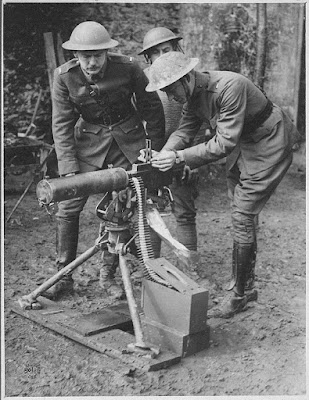
Browning is a water-cooled heavy machine gun, although some experimental versions were made that did not use a water jacket; air-cooled M1919 was subsequently developed as a medium machine gun. Unlike many other early machine guns, the M1917 had nothing to do with the design of the lock lever Maxim. At 47 pounds (21 kg) [clarification needed], which was much lighter than modern weapons of Maxim type as the first 137 lbs (62 kg) German Maschinengewehr 08 (08/15 model: 43 lb (20 kg)) and the British Vickers machine gun, while remaining highly reliable. The only similarities with Maxim or Vickers are the operating principle recoil, the breech block T-slot, "pull-out" feed belt, water cooled, and before ejection. Its locking mechanism keeps sliding-block weight and complexity, and was used in many previous designs Browning. The Belt Fed left to right, and the cartridges are stacked closer together than Maxim / Vickers (patterns copied by most of the weapons later.)
The Department of the Army Ordnance showed little interest in the guns until the war broke out in April 1917. At that time, the US arsenal It included only 1,100 machine guns, and most of those who were out of fashion. The government asked several designers to present arms. Browning organized a test at the Springfield Armory in May 1917. In the first test, the weapon fired 20,000 rounds without incident. Reliability was exceptional, so Browning fired another 20,000 rounds per gun, no piece fails. Ordnance Board was impressed but was not convinced that the same level of performance could be achieved in a production model. Accordingly, a second weapon Browning used not only doubles the original trial, but also continuously fired for 48 minutes and 12 seconds (over 21,000 rounds).
The Army adopted the weapon as its principal heavy machine gun, using the flat M1906 30-06 cartridge with a 150-grain bullet base. Unfortunately, production was a problem. Several manufacturers started producing the gun, but had to establish production lines and tooling. The June 30, 1918, Westinghouse had only 2,500 and Remington had only 1,600. At the time of the Armistice, Westinghouse had 30,150, 12,000 Remington and Colt 600.
Until the beginning of World War I, the Army had used a variety of larger MGs, as the M1895 Colt-Browning machine gun "Potato" (which Browning had also designed) and weapons like the Maxim Gun, the M1909 Benet- Mercié and Hotchkiss M1914 machine gun. Though the 1917 model was destined to be the director of the US Army heavy machine gun in the war, the army was in fact forced to buy many foreign weapons - machine gun-produced French Hotchkiss 8mm was actually the largest heavy machine gun used by the American Expeditionary Force.
In 1926, the rear view of the Browning was revised to incorporate the scales for both the new M1 ball (172-grain bullet boat-tail) and M1906 (-base flat Bullet 150 grain) ammunition. M1 ball, the M1917 had a maximum range of about 5,500 km (5,000 m); M2 ammunition, about 3,500 yards (3,200 m). [9] The rear sight had a view of the battle as well as a blade type suitable for use raised view either against ground or air targets.
The M1917 saw limited service in the last days of World War I. Because of production delays, only about 1,200 models 1917s saw combat in the conflict, and only in the last two months and a half of war. Some were too late for combat service. For example, the 6th Machine Gun Battalion, fighting as part of the second division not exchange their guns Hotchkiss M1914 to M1917 Browning machine guns until Nov. 14, three days after the armistice. The United States equipped about a third of the divisions sent to France; the others were also equipped with machine guns bought for the British Vickers machine guns built by Colt in the US French or. Where did the Model 1917 see action, its rate of fire and reliability were very effective. [Citation needed] The M1917 weapon system was lower than the Vickers and Hotchkiss guns because cartridges England and France had range of about 50 percent longer than the 30 -06 cartridge service used in World War II
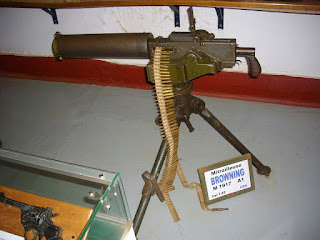
The Model 1917A1 was used again in the Second World War, and is used primarily with the ball M2, tracer and armor-piercing ammunition introduced just before the start of hostilities. Some were supplied to the UK for use by the Guard and the entire production of 0.303 Vickers was needed to replenish the abandoned during the fall of France team. weight and volume of the M1917 meant it was generally used as a defense or as a fixed battalion or regiment support weapon. In the fierce battle Momote runway in Admiralties, machinegunners 5th Cavalry US Army killed several hundred Japanese in one night using their Browning M1917; a gun was left in place after the battle as a monument to the desperate struggle.
The Model 1917 was called to service again in the Korean War. On at least one occasion, US troops in the Korean War urinated in the gun when the water cooling failed in the cold Korean winter temperatures. The Model 1917 was eliminated slowly out of military service in the late 1960s in favor of the M60 machine gun cameras much lighter in the new cartridge 7.62mm NATO.
The attributes of the Model 1917 (and similar weapons, such as the Vickers machine gun) -Evaluation continuous fire from a static position-had been rendered useless by the transition to highly mobile war. Many of the 1917s were given to South Vietnam. The last regular service of the United States was during infiltration machine gun in Fort Benning, Georgia, where his sustained ability of the fire was an advantage in long nights to shoot over the heads of students under trace. Gun continue to see service in some armies of the Third World and in the second half of the 20th century Some are still in use today by irregular military forces because its water-cooled barrel allows long periods of sustained fire.
Visit Liberators Facebook Fanpage to get more information on the game!
Liberators online
Liberators is a free-to-play strategy game published by MutantBox. It occurs in the real history of World War II, mainly in German about the revolutionary struggle that takes place inside the game in the first person perspective based, rich and diverse gameplay history, bringing experience actual shooting.
Enemy Zone liberators (Wolfenstein: Enemy) is Wolfenstein (Return to Castle Wolfenstein) of an information element. This piece of information content, including independently games and online games in two parts. Later, for some reason, decided to suspend development Mutant Box developers of this game, and the network has been produced part of the free distribution players
Enemy Territory is a combat team as the core of online games, players can choose different branches of the military occupation in the game, a team to complete the game in the task together. Although the enemy zone is a FPS game, but it added a set of upgrade innovation system, players can be selected to enhance the skills of the arms by the cumulative score. The upgrade system allows greatly improved gameplay, as players fps games should not miss. Because the enemy zone has a wealth of career choice of weapons, in addition to upgrading the relatively complex system, and task settings.
Liberators official site
In campaign mode, the game offers four different branches of the military for players to choose from, all arms Features Description
Soldier (Soldier) is a standard fighter, no special abilities, but may need to use one-handed weapons like sniper rifles and rocket launchers, the army is the main source of firepower .
Engineer (Engineer) have a basic combat, you can use the explosive destruction of the land, more importantly, engineers can repair the heavy machine guns MG42, providing considerable firepower of our army.
Medic (Medic) were fighting army capable basic medical combat injuries, and even be able to resurrect dead colleague.
Officer (Lieutenant) can not only add ammunition for other comrades, you can also use the back of the attack or aerial bombardment radio call, this kind of special attacks are often able to play the game changing annoying amazing results.
Classic shooter in first person, a good game to restore the functions of the German headquarters, the quality of the textures in the game is remarkable at the time, the most important thing is the game was introduced in the body section mode determines, based on the different parts of slaughtered enemy, showing the performance of the real action.
Firearms, weapons rich a variety of different vehicles, it is help players better gaming experience, players in the game, use appropriate weapons in different scenarios.
Liberators is a free war game published by MutantBox, a start-up developer focusing on online strategy games. Our Liberators Hack is the only labor fraud tool that can produce oil, consumables and gold in the game, without being detected. Created and published by one of the most popular crack team - Razor 1911 our Cheat works on all Android and iOS devices. Download it from the link below and follow the instructions. Liberator is a strategy war game set in World War 2 to play on Facebook. The game has amazing graphics for a browser game. The combat system, although it may seem simple, it actually requires some strategic skills. Overall Liberators is a must play for every World War 2 fanatic.

Liberators has three resources - oil, consumables and gold. The gold is the premium currency, which means it requires real money, if you want it in large quantities. can afford not many people spend a lot of money, so that these liberators cheat is the best solution. Download it now from our site and use it to produce as many resources you want. You can then use the oil, consumables and buy gold, which is in the game. Basically, you will have zero limits in the game, thanks Razor 1911. With the oil to update your tech and base. The deliveries are required in battles. The gold can be used to buy from shop, upgrade units and more.
The picture above is proof of one of our test account we specifically for this hack. We have to be discovered 99k oil, consumables and gold without. You can even more if you want, there are no limits, because the detection rate to zero percent. In fact, all our accounts in which we have this tool tested, can still to access and play without any problems playing. Follow these simple instructions to get the best results if our hack: download it to your PC and write the target account name or ID. Then select the values for the three resources, and press the start button to begin delivery. If the loading bar reaches 100%, you can start the game in your browser.
100 percent safe to use
Just a few clicks needed
Manufactured by Razor 1911
Free gold without spending real money
instant results
Free to download
Liberators feature real-life historic weapons. Once praised by General Patton as “the greatest implement of battle ever devised” the M1 Garand was a seminal weapon throughout WWII. It was a semi-automatic rifle whose tremendous firepower gave the Allies a notable advantage over Axis troops. The M1 allowed its users to maintain significantly higher rates of fire, while also offering exceptional penetrating power.
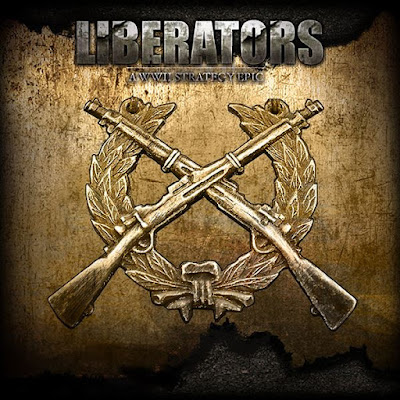
The M1 Garand (officially called US Rifle, .30 caliber, M1, later simply as a rifle, .30 caliber, M1, as US Rifle, .30 caliber, M1.) Is a semi-automatic rifle chambered for the 0.30 - 06 Springfield rifle cartridge used by the US Army from 1936 to 1957 The rifle is named after its designer John Garand. It was the first standard issue semiautomatic military rifle. As "the greatest battle implement ever devised" by General George S. Patton, the Garand officially the bolt-action M1903 Springfield replaced as the standard service rifle of the United States Armed Forces in 1936 and was subsequently replaced by the selective-fire M14, starting During the Second World War, which gave M1 compels us in 1957., a distinct advantage in firefights against its axis enemies as standard issue rifle were more effective than the axis "slow burning BOLT-ACTION RIFLES. The M1 continued in large numbers until 1963 and to a lesser degree until 1976. Like its predecessor, used the M1 from the Springfield Armory was built. Today the M1 is in use for drill purposes.
The M1 is an air-cooled, gas-operated, clip-fed, semi-automatic, shoulder-fired weapon. That is, the air cools the cylinder; that the power to the gun chamber and the subsequent round comes from the expanding gas the previous round fired Hahn; that an en-bloc loaded by inserting (that is, it goes into action and the functions of the rifle as part of the rifle) metal clip (with eight laps) in the receiver; and that the gun fires each time the trigger is pulled a round. After eight rounds were shot, the empty clip is ejected automatically with an audible "ping" noise.

The M1 was the standard issue service rifle of the US armed forces in World War II and the Korean War, and also saw limited service in the Vietnam War. Most M1 rifles were issued to the US Armed Forces, even though many thousands were also borrowed or as foreign aid, made available to American allies. The Garand is still used by drill teams and military honor guard. It is also widely sought after by the civilian population as a hunting rifle, target rifle, and military collectors.
Although the name "Garand" is often pronounced / ɡərænd / according to experts and people who knew the weapon John Garand designer / ɡærənd / (with messenger rhyme) preferred. It's marksmanship program for American civilian property by the Civilian.
See how the M1 Garand plays its role in Liberators!
Liberators features historic World War II battles. Often called the beginning of the end for Nazi Germany, the Allied storming of Omaha Beach on the coast of Normandy was a bloody but triumphant affair. What changes will you make when your soldiers go charging toward the war-torn shore?
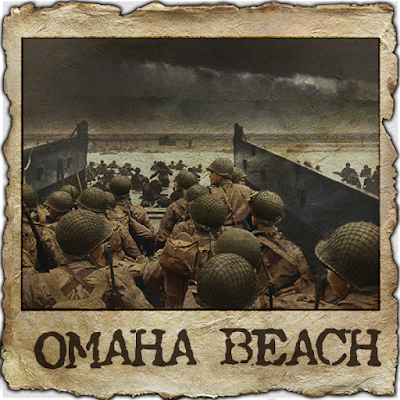
Omaha Beach was the codename for one of the five sectors of the Allied invasion of occupied France in Germany in the Allies on 6 June 1944, during the Second World War. Omaha is located on the coast of Normandy, France, facing the English Channel, 8 km (5 miles) long, from east of Sainte-Honorine-des-Pertes west of Vierville-sur-Mer on the right bank of the Douve River estuary , Landings were here to visit the British landings at Gold connect with the American landing in Utah with the East to the West, creating a continuous supply to the Normandy coast of the Bay of the Seine necessary. Among Omaha it was the responsibility of US Army soldiers, the British Royal Navy are provided with the maritime and naval gunfire support from the United States Navy and elements.
On D-Day, the untested 29th Infantry Division, are managed directly from Pointe du Hoc, together with nine companies of US Army Rangers, Sturm should the western half of the beach. The battle-hardened 1st Infantry Division was given the eastern half. The first assault waves, consisting of tanks, infantry and pioneers forces were carefully planned to reduce the coastal defenses and thus, end up the larger ships of the follow-up waves around.
The primary objective at Omaha was a bridgehead of about eight km (5 miles) to secure depth, between Port-en-Bessin and the Vire River, linking with the British landings at Gold to the east, and the achievement of the area of Isigny to connect the west with VII Corps landing at Utah. Against the landings was the German 352nd Infantry Division, a large proportion of them were teenagers, though they were supplemented by veterans who had fought on the Eastern Front. The 352nd was never a battalion or regimental training. Of the 12,020 people of the division, only 6,800 were experienced combat troops, detailed to defend a 53 km (33 Miles) forward. The Germans had been largely implemented in bases along the coast-German strategy is based on defeating any seaborne assault at the water line. Nevertheless, given Allied calculations indicate that Omaha's defenses were three times as strong as the one that she had met during the Battle of Kwajalein and its defenders were four times as many.
Very little went as planned during the landing at Omaha. Difficulties in navigation caused the majority of landing craft to miss their targets throughout the day. The defense was unexpectedly strong and inflicted heavy casualties during the landing of US troops. Under heavy fire, the engineers struggled to the beach obstacles; later landings for the few channels that have been deleted bundled. Weakened by the losses made only during landing, was the surviving stormtroopers not heavily defended exits clear from the beach. This led to further problems and therefore delays for later landings. Small penetrations were eventually by a group of survivors making improvised assaults achieved, scaling the cliffs between the most defended points. By the end of the day, two small isolated points was obtained, which were then inland exploited against weaker defenses further, thus achieving the original D-Day objectives over the following days.
Relive the Omaha Beach battle in Liberators!
Liberators is a browser-based action MMO published by MutantBox with realistic warfare published front, historically authentic-looking tanks, intense fighting atmosphere and changing viewpoints violently team promotions and more. Special attention to detail, great soundtrack and ease-to-pick-up-control make playing this game a pleasure, even if the game would be much better fare, when it came, along with more innovations in terms of gameplay.
Pros: true-to-life battling Ambiente mediated by stunning 3D aesthetics and atmospheric sound effects; accessible game controller; a plurality of tanks with unique specifications; Convertible points of the third person to first person.
Cons: long team-up time before fighting; clustered somewhat ambiguous and interface; insufficient tutorial for beginners.
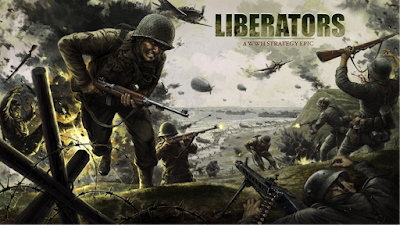
Happiness is really not on my side this time. An enemy tank is at an alarming rate, press on, knocking down, which is an obstacle to progress, it is a giant tree or a stone wall. 50 meters or so away was a fixed and shinning Revolver a huge impressive iron body, with a long gun protruding on the two-meter-deep snow: Soon I was a clearer picture of forced. Its powerful titles are still deep into the soil with a mixed scrunching sound and print ribbons, and the gun to his direction is it ... .Yes, I am his prey, and to me is not a game for them, I know, of idea. Hopeless environments are using more philosophy in the display. And the ruthless front, this is my: If I can not be an invincible hero, I am determined to be a useful martyr. Conversely, I think Tank adjusted direction and head forward at full speed. Incessant shots all the time were fired, and I have the sting of balls once in a while. The heavily reduced hitpoints warned me that destruction would not be far, but death would not be so many concerns bring me this time, as I have drawn them successfully in a circle of my allies. Immersed in his rampage, the lone enemy tanks approaching our tanks at the rear was not aware of a heavy tank on its left side and a medium one on the right. The fatal shot was finally, and my world fell suddenly in a way white desolation ... to be sometimes weak and vulnerable, is not a shame, that's a shame that you do not make the most of whatever value you own of. This is true everywhere, even in an online shooting game.
Teamwork is a compelling of the many elements of the Liberators. Stunning 3D graphics,-voltage Engendering Sounds, an incredible variety of tanks and tons of unlockable upgrades allow this game (abbreviated as PT) to make a new high, to ask by neglecting adequate tutorial about the seemingly difficult control available is probably some to push out.
Not many tank-themed action games currently boast as impressive visuals and stunning as those who. In PT The depot you are introduced to the game immediately after the input is enough to give you a good insight into the quality aesthetics of this game. The Smart-tanks will not fail to catch your attention in the first place, because they are the heart of the game. Moving the mouse while holding down the left mouse button gives you any perspective you might want to take. Besides that, you can zoom in and out as you want by rotating the mouse wheel. Sure, each tank is presented with finesse. Slaty gray, light brown green, along with a handful of other unobtrusive color it will not miss the strategic importance of camouflage in real wars either in pounds or displayed on the screen to remind. Patches of flake coatings is another ingenious touch to achieve realism. Apart from the glittering lights, old fence like railing, a little greasy parking all carry a cryptic nor credible exam metro depot to provide. However, this is only the beginning of your feast. Designed with reference to a large pool of images and landscape plans of individual wars, reconstruct the various in-game battlefields of history to the utmost. Now you fight in the snow-covered city where the next battle you can find themselves entangled by dunes or winding small hills undulating into the wild. Not only the scenes are true to life, individual actions are well mapped intelligently and carefully. For example, if your tank is a light tank, usually you will be forced by a cumbersome barrier to stop, like a big tree, a big lamppost or a yard area; but if you fall your tank in the heavy type, it can actually take everything weaker, which is in its path. There are times you may find that your tank should be able to design an iron or something fell even more. Besides, if you are to close enough your target audience, you can also see the fricative sparks make your balls at them.
In addition to great visuals, generously provided tanks of American, German and the Soviet Union will spend definitely an irresistible lure for Tank game fans. There are light tanks, suitable for scouting, medium tanks nickname battlefield "Master" and heavy tanks, the degree of damage, soak and deal, and tank destroyers, a nightmare for all types of containers. However, tanks of all kinds frightening beset by his own weakness, which is perhaps why they look so realistic and function. Light ones are poor at attacking, while severe ones vulnerable rear and side arms have. What's more, tanks of the same type, are individualized by attributes such as each distinguished by a unique weapon, Revolver, hull, tracks, engine and radio different shape, color and the ability to lend to them according to distinctive attributes. For example Pzl is a light tank model with 240 hit points, 65 HP engine power and a speed limit of 29.9 km / h etc; while MS-1, a light one, enjoying 200 hit points, 43 HP engine power and a speed limit of 32 km / h. Modeling of the tanks to the real D and S series succeeds the developer not only in authentic visual impact to bring, but also to make credible functionally each of them.
Gameplay and control will not appear strange to players who know with similarly themed games, like World of Tanks, and Operation Desert Sab. They are not innovative, but they are quite exciting. WASD and mouse can meet all your needs mobilization principle, and as noted above, shaking with a light camera, you can turn your in-game camera. That's not all. The mouse wheel to zoom in and out, which means that you can change between the third person point of view flexible and sniper view. For anti-tank destroyer, there is even a "howitzer" mode. There are some "magic" key for you to explore in this game, as R and R, which allow you to move back and forth at different speeds. The game really plays easily and smoothly. At the beginning of each battle, the system will automatically assign an equal number of players into two teams. It's really an intelligent game in this regard, since the two teams are matched in a rule in relation to the tank types, so if you are a shabby light tank with low HP, you will not find counterparts of heavy styles Panzerjäger , Since the game requires teamwork, from single performance is wise nor welcome neither in the rule. They caused all often alone a greater possibility of the destruction, in turn affect the poor the whole team prospects. Every battle awards you. With a certain amount of experience points and coins that can be used in research and buy parent modules according to the development tree for upgrades However, owning stronger armor, you may find it necessary to dip into your wallet and run through the twisted development tree.
That's not to say the game is not without its drawbacks, though. The thing I find most unsatisfactory is the long team-up time. It is cast in fact like a dice to see if you can join the fight at 1 minute or two, three, four or even more minutes. The all too brief guide is barely enough for newcomers, as far as I can see. More players would be attracted here if they could offer more information about the mission, goals, and some auxiliary tools in the beginning.
The long and short of it is a great Liberators tank-themed action MMO game with a handful of interesting twists on upgrades, tank accessories, and battlefield visuals. Although with a slightly revised content and gameplay (considering War of tanks), the game is still fun and joy.
